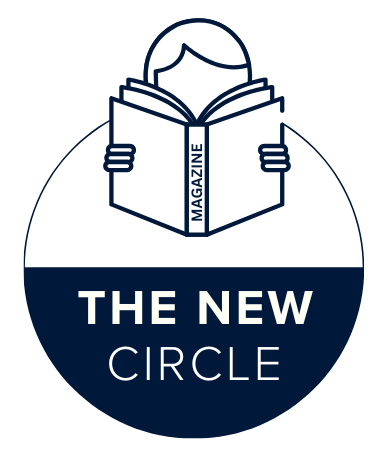Look at any neighborhood with solar panels, and what do you see? A sea of silent, dark blue rectangles, all working in perfect harmony to power a home. Right?
Well, not exactly.
The truth is, that picture-perfect array is often a scene of quiet struggle. One panel might be baking in the sun at peak performance while its neighbor is chilled by a passing cloud. Another could be slightly dusty, and another might be dealing with the morning shade from a chimney. In a traditional solar setup, that one struggling panel can drag down the performance of the entire system. It’s the classic case of the weakest link.
But what if you could give each solar panel its own personal coach, dedicated to squeezing every last drop of electricity from the sunlight that hits it? That’s not a futuristic dream. That’s the reality of a system built around HMS Photovoltaik—a term that’s really a gateway to a smarter, safer, and more flexible way to harness the sun.
Let’s break down what this is all about.
So, What on Earth is “HMS Photovoltaik”?
If you’ve been researching solar, you’ve probably stumbled across this term. It sounds technical, maybe even a little intimidating. Let’s demystify it.
In simple terms, “HMS Photovoltaik” refers to a solar power system that uses a specific family of microinverters—the HMS series—made by a company called Hoymiles. The “Photovoltaik” part is simply the German (and scientifically standard) term for photovoltaics, the technology that converts light into electricity.
So, you’re not looking at one single product. You’re looking at an ecosystem. An ecosystem built around a revolutionary piece of hardware that changes the entire game for solar energy production. It’s the difference between a string of old-fashioned Christmas lights—where one dead bulb kills the whole string—and modern LED lights where each bulb operates independently.
That’s the core idea behind the Hoymiles HMS series.
The Heart of the Matter: What is a Microinverter, Anyway?
To appreciate why the HMS series is a big deal, we need to understand the problem it solves. And that means talking about the inverter, the brains of any solar operation.
Your solar panels produce Direct Current (DC) electricity. Your home appliances run on Alternating Current (AC). The inverter’s job is to make that conversion.
Traditional String Inverters: For decades, the standard was the “string inverter.” All your solar panels are wired together in a series (a string), sending their combined DC power to a single, large inverter box, usually mounted on the side of your house.
It works. But it has a critical flaw. Because the panels are chained together, the entire string’s performance is limited by its least productive panel. Shade, dirt, debris, or even slight manufacturing variations can bottleneck your system’s output. It’s a team held back by its slowest member.
Enter the Microinverter Revolution: A microinverter is a small, powerful device installed underneath or right next to each individual solar panel. Its job is the same—DC to AC conversion—but it does it at the panel level. Each panel becomes its own independent power plant.
And the Hoymiles HMS series? It’s one of the leaders in this revolution.
Why the Hoymiles HMS Series is a Game-Changer
I’ve seen a lot of solar tech come and go. The HMS microinverters aren’t just an incremental improvement; they represent a fundamental shift in thinking. Here’s why they’re causing such a stir.
1. Maximum Power Point Tracking (MPPT) on Steroids
This is the killer feature. MPPT is a fancy term for the algorithm that finds the optimal voltage and current for a panel to produce the most power. With a string inverter, you get one MPPT for the whole string. With HMS microinverters, every single panel gets its own dedicated MPPT.
Let’s go back to our shaded panel scenario. With a string inverter, that panel’s struggle becomes everyone’s problem. With an HMS microinverter, that one panel might dip in performance, but the other 19 panels on your roof continue operating at their absolute peak. In my book, that’s not just an upgrade; it’s a no-brainer for anyone with a roof that isn’t perfectly, uniformly sun-drenched all day long.
2. Safety You Can Actually Feel Good About
Honestly, this isn’t talked about enough. High-voltage DC electricity is no joke. A traditional string inverter system can have hundreds of volts of DC running across your roof and through your conduits until it hits that main inverter. That’s a serious shock hazard, especially for firefighters in an emergency.
HMS microinverters change the game. They convert the DC to AC right at the panel. What travels through the wires on your roof is much safer, grid-compatible AC power at a low voltage. Furthermore, they enable module-level rapid shutdown. With a flip of a switch (or automatically during a grid outage), each microinverter shuts down instantly, making the system safe. It’s a feature that’s becoming code-mandated in more and more places, and for good reason.
3. Unmatched Flexibility and Scalability
Life changes. Your energy needs might change too. Maybe you buy an electric car, or you build a pool, or you just decide you want to get off the grid as much as possible.
Expanding a string inverter system is a pain. You often have to oversize the inverter from the start or face a costly upgrade later. With the modular HMS system, it’s straightforward. You just add more panels and their accompanying microinverters. The system grows with you. Want to start small and add more later? No problem. It’s one of the most future-proof solar investments you can make.
4. Granular Monitoring: Knowing Your System’s Pulse
This is my personal favorite. Many HMS models come with integrated Wi-Fi that communicates with a simple gateway (DTU). This lets you monitor your system’s performance from your phone.
But we’re not just talking about total production. We’re talking about panel-level monitoring. You can see, in real-time, how much energy each individual panel is producing. If one panel starts underperforming because a bird decided to build a nest on it, you’ll know exactly which one. This turns a mysterious black box on your roof into a transparent, manageable asset.
HMS Photovoltaik vs. The Old Guard: A Clear Comparison
| Feature | Traditional String Inverter | Hoymiles HMS Microinverters |
|---|---|---|
| Energy Harvesting | Limited by the weakest panel; shade impacts the whole system. | Superior. Each panel operates independently, maximizing total output. |
| Safety | High-voltage DC on the roof; requires additional components for rapid shutdown. | Enhanced. Low-voltage AC on roof; built-in module-level rapid shutdown. |
| Monitoring | Typically system-level only. You see total output. | Granular. Panel-level performance tracking via an app. |
| Scalability | Difficult and expensive to expand after initial installation. | Highly Flexible. Easy to add panels incrementally. |
| Reliability | Single point of failure; if the central inverter fails, the whole system is down. | Redundant. If one microinverter fails, only one panel is affected. |
| Cost | Lower upfront equipment cost. | Higher upfront cost, but often leads to better long-term ROI due to higher energy production. |
FAQS
1. Are microinverters, and the HMS series specifically, more expensive?
Yes, the initial equipment cost is typically higher than a standard string inverter. But here’s the kicker: you often generate 5-15% more electricity over the system’s life, especially if your roof has any shade or complex angles. That means more savings on your bill, which can make the long-term return on investment (ROI) significantly better.
2. What happens if one HMS microinverter fails?
This is the beauty of a decentralized system. Only the panel connected to that specific microinverter goes offline. The rest of your array keeps humming along, producing power. Repair is a simple matter of replacing one unit, which is far less disruptive than a central inverter failing and shutting down your entire system.
3. Can I use HMS microinverters with any solar panel brand?
Generally, yes. Hoymiles designs its microinverters to be compatible with a wide range of common residential solar panels. However, it’s always best to have your installer confirm compatibility to ensure optimal performance.
4. How does the monitoring system work? Is there a subscription fee?
The system uses a gateway (DTU) that connects to your home Wi-Fi and sends data to the Hoymiles monitoring platform. The good news? This monitoring service is typically provided without a monthly subscription fee, which isn’t always the case with competitors.
5. Are they suitable for all types of roofs?
Absolutely. Their modular nature makes them excellent for complex roofs with multiple surfaces, dormers, or different orientations (e.g., east and west-facing roofs). They allow you to use your entire roof space efficiently, not just the perfect south-facing section.
6. What about durability? My roof is a harsh environment.
Hoymiles builds these things to last. They’re rated for extreme temperatures, humidity, and weather conditions. With no moving parts and robust enclosures, they’re designed to survive and thrive on your roof for decades.
7. Do HMS microinverters work with battery storage?
Yes, they can be integrated into hybrid systems that include battery storage. The AC power they produce can be used to charge a home battery, like the ones Hoymiles and other manufacturers offer, giving you a comprehensive energy independence solution.
The Final Word: Is HMS Photovoltaik Right For You?
Let’s be real. Choosing a solar system is a big decision. It’s a long-term investment in your home, your wallet, and the planet.
If you have a simple, unshaded, south-facing roof, a string inverter might still be a viable, budget-friendly option. But how many of us have that perfect roof?
For everyone else—for homes with shade, complex designs, or owners who plan to expand their system—the HMS Photovoltaik approach isn’t just an alternative; it’s the superior choice. The combination of maximized energy production, enhanced safety, and unparalleled flexibility is a powerful trifecta.
It’s a move away from the one-size-fits-all mentality of the past and toward an intelligent, adaptive, and resilient energy future. And honestly, that’s a future worth investing in.
So, what’s your roof’s story? Is it time you gave every panel a voice of its own?
YOU MAY ALSO LIKE: The Best Ways to Incorporate Christmas Lights into Your Festive Decor

